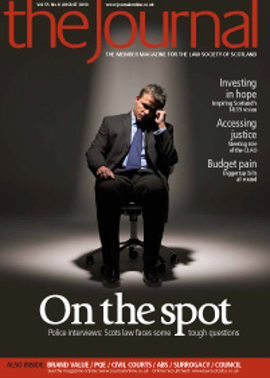Paper, pixel and process

This article, the first of a series looking at recent research into communication in the British legal sector, aims to give readers an overview of the scale and mode (paper or electronic) of written communication in the sector. The data are from a quantitative survey of the self-reported communication habits and preferences of 200 British solicitors (34% response rate), and more than a dozen in-depth interviews with a wide spectrum of individuals from the legal profession (public and private sectors), as well as academia.
Britain’s legal profession sends approximately 1,000,000 written messages every business day. It may surprise many to learn that, overall, 68% of solicitors’ outgoing messages are electronic (including email and electronic lodgments, but not faxes). Although this figure is distorted by the corporate sector (their communication is 18 times as likely to be electronically as paper-based), even outside that practice area 55% of correspondence is electronic.
The research confirms what many in the legal profession know intuitively – there are marked differences in the communication modes used in different practice areas and to different destinations (figure 1). For example, 42% of electronic correspondence goes to corporate clients, but just 5% of paper communications. Over one third of paper correspondence goes to private clients and another third to additional firms. Clients and other law firms are the biggest destinations for correspondence from solicitors, in both paper and electronic modes.
Figure 2 illustrates that the majority of correspondence to the private sector (i.e. private and corporate clients, law firms, lenders and service providers such as accountants and surveyors), is now sent electronically (70%). However, despite the proliferation of high-profile (and expensive) e-Government initiatives (such as ARTL), 70% of correspondence to the public sector is still paper-based.
An important conclusion can be drawn from figure 2 – that legal correspondence to private sector destinations dwarfs that of public sector ones. This fact has important ramifications for the Law Societies and Government if they want to foster an efficient, effective, modern profession. Fit-for-purpose electronic communication facilities cannot primarily be concerned with correspondence to the large institutions, but rather with platforms that can be used “business-to-business” that will encourage a greater network effect. This has been the approach adopted overseas, notably Spain’s Abogados en Red system. (It is similar to the Law Society of Scotland’s Law Seal project from the early 2000s, a system which, if implemented, would even now position Scotland at the forefront of communication modernisation in
The economic attraction of electronic correspondence is considerable. Moderately large firms report spending £100,000s each year on postage, even when using the cheaper and more reliable Legal Post and DX. But postage itself is only a tiny minority of the total cost – even hyper-streamlined commercial mail fulfilment houses, mailing millions of bank statements each month, estimate a cost of 80p per message (including letterhead, envelope, printing and packaging). True costs in the legal profession, including materials, equipment and staff time to print and package letters, are likely to amount to 5-10 times the cost of the postage.
In addition, there are costs at the receiving end to consider too (for example, as many as three mailroom/messenger/filing staff per 100 fee earners). Scanning of incoming mail is increasingly common, both in the private and public sectors, but crucially, converting scanned documents back to indexed or editable versions (“OCR”) almost always introduces errors. For example, Registers of Scotland employs at least 50 people to scan 350-450 lodged paper files every day (ironically, many of which started life the day before on a computer in a solicitor’s office).
However, despite enabling legislation to help overcome this situation (e.g., in the UK, Electronic Commerce Directive, Electronic Signatures Directive, Electronic Communications Act), there is an unshakable tension between the economic and cultural pressures driving the profession towards increased electronic communication, and issues of legal process, technology, market forces, risk, and data protection that maintain the paper-based communication networks on which the profession ultimately relies. The causes of this tension, and insight into individual solicitors’ attitudes towards electronic and paper communication, will be the subject of article two in this series, while article three will look at what is required for an efficient, modern profession – what’s possible, what the future might hold and what can potentially be done to accelerate it.
For charts and diagrams please refer to magazine or download the PDF
In this issue
- From Cadder to Calman via Constitution
- We can make the bill work
- The Cadder effect
- Bio Quarter: a case study
- Budgets of many colours
- Been there, done that
- Gill and the consumer
- Smoothing the path
- Net yourself a baby
- What's in a name?
- Inspiring change
- Further work in hand on constitution
- Faculty support on the agenda
- PCC's first year of "unsatisfactory" complaints
- From the Brussels office
- Learning in context
- Paper, pixel and process
- Growing cloud
- Ask Ash
- PQE: Post Qualification Equality?
- Technology to the rescue?
- "Definitive" approach
- Threat, or opportunity?
- Equality for all?
- Time to take a stand?
- A burden discharged
- The promise of certainty?
- A future for crofting
- Final tally
- Website review
- Book reviews
- An easy way to give?
- Three cheers for iPad






